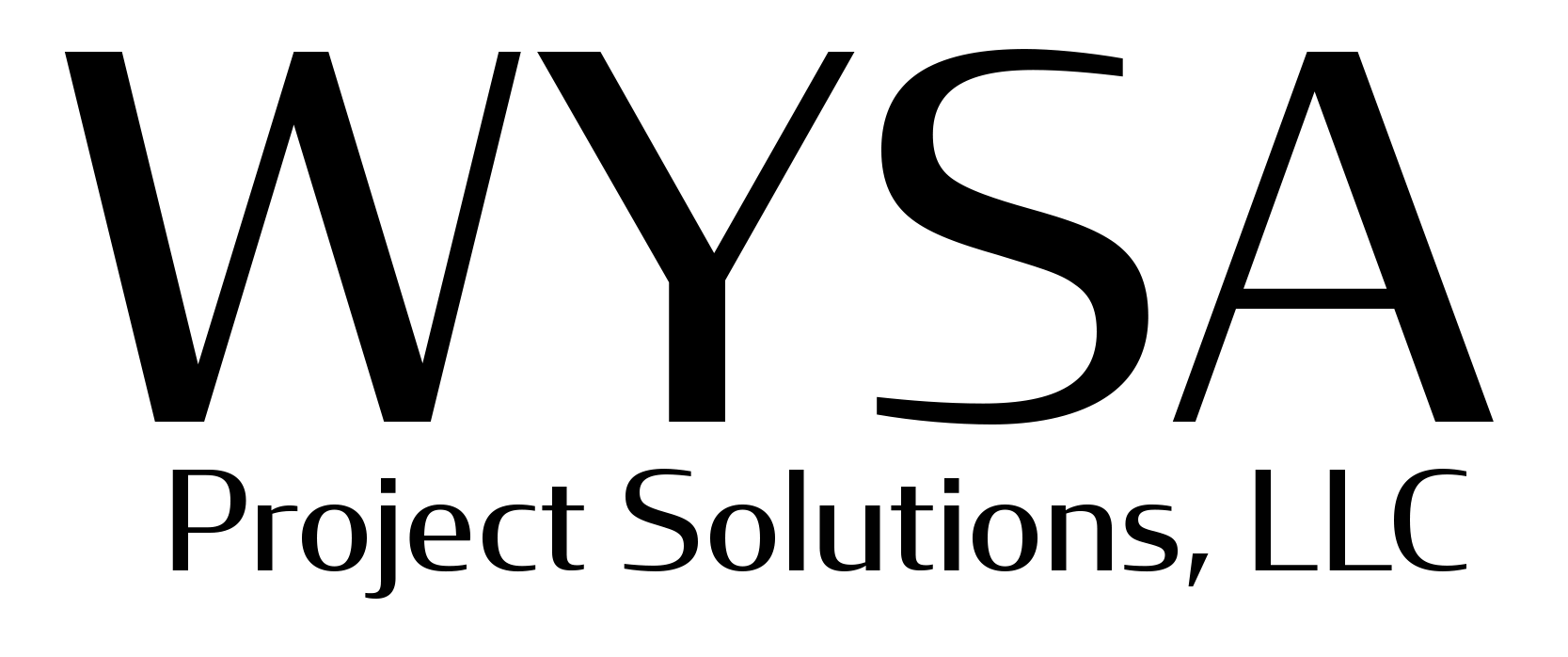WYSA Project Solutions, LLC
Dedicated to providing strategic recommendations to optimize procurement performance within an organization.
Commentary & Insights

The past twenty some years seem to have flown by at hypersonic speed. Technological change has made me dizzy. Videoconferencing meetings used to be expensive and just limited to executive teams. Zoom meetings for staff or book clubs can now be accessed at no cost. Just as I get used to all of the features on my iPhone a new model comes out and I’m asking my nephews to come by and explain the new features. It’s hard to keep up. Advances in knowledge and technology have come faster than our ability to adapt. Exhaustion is global. People are folding their arms, planting their feet, and saying “no more!” In the long ago times Socrates opined that “the secret of change is to focus all of your energy, not on fighting the old, but on building the new.” Yeah…he’s right but it’s 2023 and we’re just coming out of a pandemic. There’s not much energy left to fight or embrace or to focus for that matter. In contemplating recent assignments I’ve looked at situations, taken a deep sigh, thought “change is so hard”, and wondered if I should just opt out. Change that needs to be made can appear as if you are facing a Terracon Transformer, but as they say, the journey to get to a different place begins with the first step. And although the change may indeed need to be sweeping, in order to be successful, it must start with small, manageable, carefully orchestrated micro initiatives. Slow, steady, and persistent…baby steps. For the sake of conversation let’s say that an organization decides to adopt an electronic workflow system. The vendor suggests that the implementation will only take about six months. The reception to the implementation, which will involve additional work for everyone, has been met with skepticism and maybe overt resistance. An implementation plan has been developed that matches the timeline suggested by the vendor. During these times of high anxiety and widespread staffing challenges I’m suggesting that the timeline be elongated, that the phases and steps outlined by the vendor be broken down into smaller increments, and that the implementation schedule is doubled. Baby steps. A slower road to desired productivity gains, but one that will ultimately result in a more sure-footed and effective implementation process. Incorporating change has always been hard, but right now it’s feels like it’s bone-crushing. It’s time to slow the pace down and obsess more on getting things right. Staff should be allowed time to contemplate (focus on) the changes and pace themselves to develop the requisite organizational strength to transition to a new system, or a new structure, or a new initiative. They should be given plenty of “wobble time” to play with the system and get comfortable with it before the change has been declared to have been made. This approach is an imperative these days. The failure rates for change adoption are notoriously high, so why not take more time up front to develop more confidence while “building the new”? Slower productivity might appear to be a non-starter in our nano-scaled world, but the long-term results will prove to be worth it. The hyper-fast rates that businesses were running at, a faster better cheaper mode that we were all buckling under in pre-pandemic years, can’t be sustained right now. Too much pressure, too much anxiety, too much change in the universe and metaverse. It’s time to slow things down. Allow the change to be digested at a reasonable pace. Smaller, surer, persistent baby steps will get us all up and running.

Summer 2022 - Can’t find any new crime dramas on streaming services? If you love that genre, you might be hooked into reading until the wee hours of the morning at www.justice.gov/news or www.stateoig.gov/case-summaries . The results of investigations on these sites have all the makings of a binge-worthy TV series. Lack of accountability. Incompetence. Greed. Incarceration. A parade of heads of large and small organizations, elected officials, and desperately ambitious employees, consultants or contractors heading to prison for white collar crime in the form of procurement fraud. With costs for essential services increasingly including a corruption quotient, is there any way to reverse the loss of the public’s faith in organizations that purport to serve their interest? How do we stop the aforementioned parade? There’s no magic bullet or simple answer. Taking on the challenge requires implementing rigorous standards that involve education and assessment and acceptance of the resolve that will be required to minimize the number of bad actors like those featured in the websites mentioned above. You may think as a consultant, my position on this issue is a tad self-serving. But it’s based on 40+ years in the world of procurement and project management in the private and public sectors. Both sides of the fence, as the cliché goes. Take a look at Certified Public Accountants (CPAs) who, like staff involved in procurement, are charged with ensuring integrity in the financial transactions they are involved in. CPA’s have to complete a program of study, followed by an exam, then certification and licensure which can be suspended for violations. Not so for those responsible for the expenditure of millions, sometimes billions of dollars to procure construction projects, technology services, and equipment to keep the country moving. Entry level procurement positions typically, but not always, require a degree in business, finance, or a similar field. Not enough. Engineers develop specifications and requirements for these purchases, but rarely receive any procurement training. They need to. Obtaining goods and services that meet the needs of an organization at an acceptable cost is no easy feat. It requires specialized education and training. At a minimum staff tasked with procurement responsibility should complete a certificate program that includes ethics, purchasing strategies, evaluation, negotiations, and contract terms and conditions. This should also apply to a lesser extent to their technical counterparts. Certification, in and of itself, still is not sufficient. Another “must have” is tailored in-house training that includes addressing procurement requirements and any special conditions that are specific to the organization or municipality. Regularly scheduled compliance assessments are the next step in reducing the procurement to prison pipeline. This step may help lessen the influence of that noun that starts with a P, followed by an O, followed by an L, (you’ve guessed by now…politics). Unfortunately, there are individuals who try to use power and influence to determine a procurement outcome that will ultimately and surreptitiously benefit them to the detriment of the public. Activity that can eviscerate the performance of the smartest, well-trained procurement staff. If, as a result of the assessment trouble is found, a detailed audit and a transformation plan should be next. Unceasing vigilance is required. Education and training and vigilance via assessment are a must. That’s the gist of what I have to say. I especially like the vigilance part. The word has a hint of drama about it. Some have suggested I work on a screenplay…take what I’ve personally witnessed and produce one of those series that stream. Share what a part of the world looks like in this particular area where crime is always a temptation. Movies have certainly influenced mass behavior, right? What about a series which is not focused on the criminals but an intriguing but unassuming character. A low-key Clark or Clarissa Kent-like hero who ruthlessly advocates for integrity? One who fights for the public interest with a zeal that embodies all the best Marvel characters merged into one. Might not be as intoxicating as the movie Wall Street’s Gordon Gecko’s “greed is good” commentary or as adrenaline-producing as sex crime dramas. But maybe my spiel would motivate the citizenry to pay keener attention to what’s going on inside organizations and how their tax dollars are being spent. Timely and important right? Would you watch? Honestly…would you watch?

